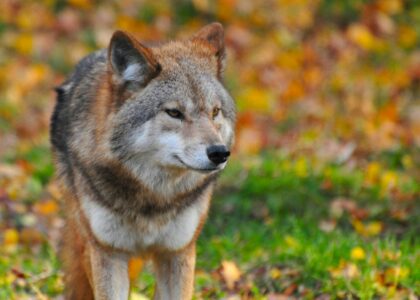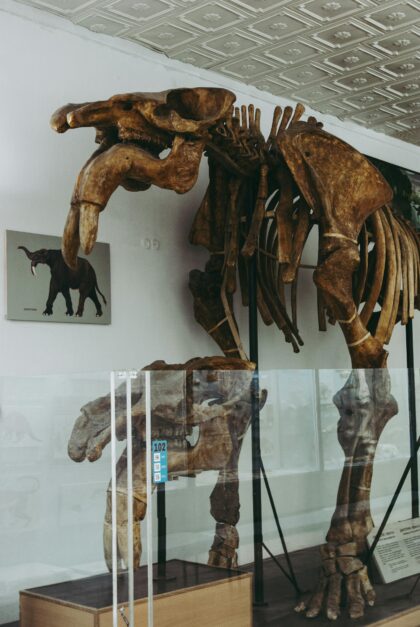
Much of the science news these days remains focused on US policy developments, funding changes, and significant shifts in messaging. There is certainly more than enough to fill another blog post. At the same time, I’m not sure I have anything new to say. I remain in favor of funding basic research, both to learn about the world and as a good investment in the future. I remain in favor of supporting public health programs here and abroad that reduce human suffering from various communicable diseases and other ailments. If folks have questions, broad or specific, I am happy to chat in the comments or wherever else you can get a hold of me. I also think there is value in talking about new science, so we can remember why this endeavor is worthwhile. So, let’s talk about dire wolves.
Much of the internet was abuzz Monday morning with the announcement that Colossal Laboratories & Biosciences de-exincted (?) the dire wolf. We’ve encountered this team before (although the company is new) when we discussed their similar interest in the woolly mammoth. That was 8 years ago, when they optimistically thought the mammoth would be two years away; they are now forecasting a mammoth birth in 2028. But the wolves in question are already here, with the first born last October.
Dire wolves were canines that lived roughly 100,000 to 10,000 years ago in the Americas. They likely went extinct because their prey–large herbivores like the ground sloth and the mastodon–went extinct through an unknown combination of human hunting and climate change. These new wolves are genetically modified gray wolves, with 20 changes introduced across 14 genes to give them traits more like those of dire wolves. Dire wolf genomes, sequenced from fossils, informed these changes. However, that is just a sample of the total number of differences between the two species. Based on the genome sizes of wolves and typical molecular clock estimates for mammals, we’d expect hundreds to thousands of changes to accumulate between grey wolves of 10,000 years ago and grey wolves of today. Grey wolves and dire wolves diverged 5-6 million years ago, giving even more time to acquire mutations to the point where they are considered to be from a separate genus. So clearly we are talking about a small sample of the genetic differences.

Now, many of the overall genetic differences between dire wolves and grey wolves are likely to be neutral or nearly neutral, meaning of little or no consequences to fitness. However, that doesn’t necessarily mean they have no impact on phenotype–the physical and behavioral traits of the wolves. But those phenotype changes could be subtle. It is possible that just those 20 changes are responsible for many of the most significant phenotype differences between the two species. Certainly the scientists doing this work believe that to be the case. But we have incomplete information on which to base that assessment; the fossils can only tell us so much.
Furthermore, not all phenotype differences may be genetic. Wolves don’t have as sophisticated an educational system as humans, but they can learn from other wolves and their behavior is impacted by their interactions with other wolves. For example, in turns out that the alpha male concept of pack hierarchy comes from studying wolves in captivity and doesn’t really apply to wolves in the wild. So it stands to reason that there could be behavioral differences between dire wolves and grey wolves that won’t be apparent in these new wolves because they will not have grown up among dire wolves.
So is it wrong to call these new creatures dire wolves? Taxonomically, they almost certainly shouldn’t be considered the same species as extinct dire wolves. I’d guess that if you could bring dire wolves to the present in a time machine, they wouldn’t be able to have fertile offspring and maybe not any offspring at all. At the same time, I can’t entirely blame the scientists for using a name that will capture the imagination (and headlines). There is legitimate and innovative science going on here, even if some of the marketing language and imagined applications are hyperbolic.
One of the scientific questions is how to figure out which genes impact which phenotypes. The high school intro to biology model implies that genes correspond more or less 1-to-1 with traits, but in fact many traits are impacted by many genes, and the same gene may impact many traits. For this work, they were able to draw on prior knowledge about the genes of dogs and wolves and which variants cause which phenotype changes. But it’s not entirely clear from the press materials how they determined what changes to make and how they knew there wouldn’t be unintended or undesired consequences. Formal publications on this work may clarify that issue and reveal whether they have contributed new techniques that might be applicable in the general case of identifying gene-trait relationships and gene-gene interactions.
A similar problem arises at a higher level: species don’t exist in isolation but occur in ecosystems. As we noted, the traditional prey of the dire wolves have also gone extinct and no plans are proposed to bring them all back. Will these wolves be fine because they are likely to have grey wolf behaviors (and grey wolf gut microbiomes) and so will hunt and eat what grey wolves hunt and eat? Or will they be dependent on humans to provide food? Such questions often arise for animals bred or raised in captivity, but there are extra unknowns in this case.
All of these questions bring us to the issue of stewardship. Regardless of what happened to dire wolves specifically, there is little doubt that humans have played a role in the extinction of many species. Do we have a responsibility to try to bring as many of them back as possible? How does that interact with our responsibilities to the species that are still around? If we cannot restore an entire ecosystem, does it do more harm than good to selectively bring back some species? Not to mention that, as least so far, we aren’t really bring back extinct species but rather creating new species (or subspecies) that never previously existed.
Andy has worn many hats in his life. He knows this is a dreadfully clichéd notion, but since it is also literally true he uses it anyway. Among his current metaphorical hats: husband of one wife, father of two teenagers, reader of science fiction and science fact, enthusiast of contemporary symphonic music, and chief science officer. Previous metaphorical hats include: comp bio postdoc, molecular biology grad student, InterVarsity chapter president (that one came with a literal hat), music store clerk, house painter, and mosquito trapper. Among his more unique literal hats: British bobby, captain’s hats (of varying levels of authenticity) of several specific vessels, a deerstalker from 221B Baker St, and a railroad engineer’s cap. His monthly Science in Review is drawn from his weekly Science Corner posts — Wednesdays, 8am (Eastern) on the Emerging Scholars Network Blog. His book Faith across the Multiverse is available from Hendrickson.

Leave a Reply